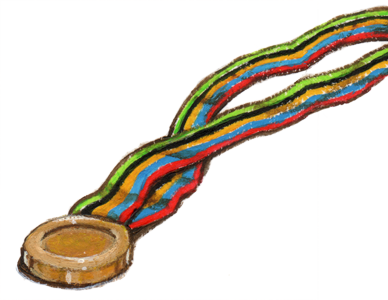At the first modern games in Athens in 1896, silver medals were awarded to the winners and bronze medals to the runners up. At Paris in 1900, only a few of the winning competitors were awarded medals at all as the hosts preferred to present the winners with artwork, cups and trophies. The winner of the epee fencing competition won a cash prize.
It wasn’t until the 1904 Games in St Louis in the United States that gold replaced silver as the medal awarded for first place. Silver medals are now presented to the competitors finishing in second place and bronze medals for those finishing third.
The last Olympic medals that were made out of solid gold were awarded in 1912. Today’s medals are made of sterling silver and covered in a thin coat of gold (weighing just six grams).
Each Olympic medal presented by the host city must be a minimum of 6cm in diameter and 3mm thick and features on one side, the Olympic rings, the coliseum of ancient Athens, and Nike, the Greek goddess of victory. On the other side is a design from the host city. The medals presented at London 2012 Olympics will be the biggest so far with a diameter of 8.5cm and thickness of 7mm.

